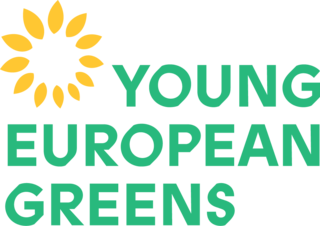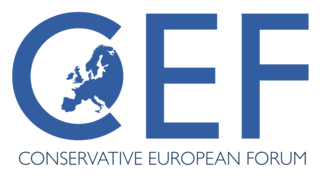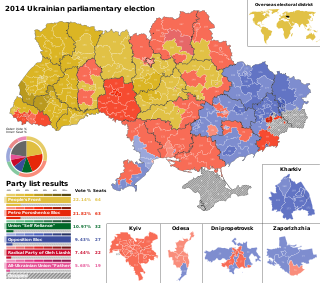
Eastern Europe is a subregion of the European continent. As a largely ambiguous term, it has a wide range of geopolitical, geographical, ethnic, cultural, and socio-economic connotations. Its eastern boundary is marked by the Ural Mountains, whilst its western boundary is defined in various ways. Most definitions include the countries of Belarus, Russia, Ukraine, Moldova and Romania while less restrictive definitions may also include some or all of the Visegrád group, the Baltic states, the Balkans and the Caucasus.

The Socialist Unity Party of Germany was the founding and ruling party of the German Democratic Republic from the country's foundation in 1949 until its dissolution after the Peaceful Revolution in 1989. It was a Marxist–Leninist communist party, established in 1946 as a merger of the East German branches of the Communist Party of Germany and Social Democratic Party of Germany.

The Eastern Bloc, also known as the Communist Bloc, the Socialist Bloc, and the Soviet Bloc, was the coalition of communist states of Central and Eastern Europe, Asia, Africa, and Latin America that were aligned with the Soviet Union and existed during the Cold War (1947–1991). These states followed the ideology of Marxism–Leninism, in opposition to the capitalist Western Bloc. The Eastern Bloc was often called the "Second World", whereas the term "First World" referred to the Western Bloc and "Third World" referred to the non-aligned countries that were mainly in Africa, Asia, and Latin America but notably also included former pre-1948 Soviet ally Yugoslavia, which was located in Europe.
Europe, the westernmost portion of Eurasia, is often divided into regions and subregions based on geographical, cultural or historical factors. Since there is no universal agreement on Europe's regional composition, the placement of individual countries may vary based on criteria being used. For instance, the Balkans is a distinct geographical region within Europe, but individual countries may alternatively be grouped into South-eastern Europe or Southern Europe.
European integration is the process of industrial, economic, political, legal, social, and cultural integration of states wholly or partially in Europe or nearby. European integration has primarily come about through the European Union and its policies.

Southeast Europe or Southeastern Europe (SEE) is a geographical subregion of Europe, consisting primarily of the cultural region of Balkans, as well as adjacent regions and archipelagos. There are overlapping and conflicting definitions of the region, due to political, economic, historical, cultural, and geographical considerations.
A parliamentary group, parliamentary caucus or political group is a group consisting of members of different political parties or independent politicians with similar ideologies. Some parliamentary systems allow smaller political parties, who are not numerous enough to form parliamentary groups in their own names, to join with other parties or independent politicians in order to benefit from rights or privileges that are only accorded to formally recognized groups. An electoral alliance, where political parties associate only for elections, is similar to a parliamentary group. A technical group is similar to a parliamentary group but with members of differing ideologies. In contrast, a political faction is a subgroup within a political party and a coalition forms only after elections.

The Federation of Young European Greens, often referred to as FYEG, is an umbrella organisation that gathers young green movements and organisations across Europe with 40,000 members. FYEG's aim is to defend climate and social justice on the European level. Since 2007, FYEG is the European Green Party's youth wing.

The Conservative European Forum (CEF) was founded in 1969 to promote the UK's entry into the European Economic Community. The organisation is committed to a positive and constructive approach to the UK's relationships with the democracies of Europe, including the European Union.

The United Nations geoscheme is a system which divides 248 countries and territories in the world into six continental regions, 22 geographical subregions, and two intermediary regions. It was devised by the United Nations Statistics Division (UNSD) based on the M49 coding classification. The creators note that "the assignment of countries or areas to specific groupings is for statistical convenience and does not imply any assumption regarding political or other affiliation of countries or territories".
The Democrat Youth Community of Europe (DEMYC) is the international umbrella organisation of the youth wings of christian democratic, conservative and like-minded parties of Europe. With currently now more than one million affiliates in its member organisations, DEMYC is one of the strongest political youth organisations in Europe.

The following outline is provided as an overview of and topical guide to Armenia:

The following outline is provided as an overview of and topical guide to Turkey:
Political violence in Turkey became a serious problem in the late 1970s and was even described as a "low-level civil war". The death squads of Turkish right-wing ultranationalist groups, sometimes allied with the state, against the resistance of the left-wing opposition inflicted some 5,000 casualties. Most of the victims were left-wingers. The level of violence lessened for a while after the 1980 Turkish coup d'état until the Kurdish-Turkish conflict erupted in 1984.

Croatian Democratic Alliance of Slavonia and Baranja is a regionalist, National conservative political party in the Eastern Croatian region of Slavonia. Until 2015, the HdSSB was considered right-wing populist.

Snap parliamentary elections were held in Ukraine on 26 October 2014 to elect members of the Verkhovna Rada. President Petro Poroshenko had pressed for early parliamentary elections since his victory in the presidential elections in May. The July breakup of the ruling coalition gave him the right to dissolve the parliament, so on 25 August 2014 he announced the early election.
The Capricorn Africa Society was a multiracial pressure group in British colonies in southern and eastern Africa in the 1950s and 1960s.










